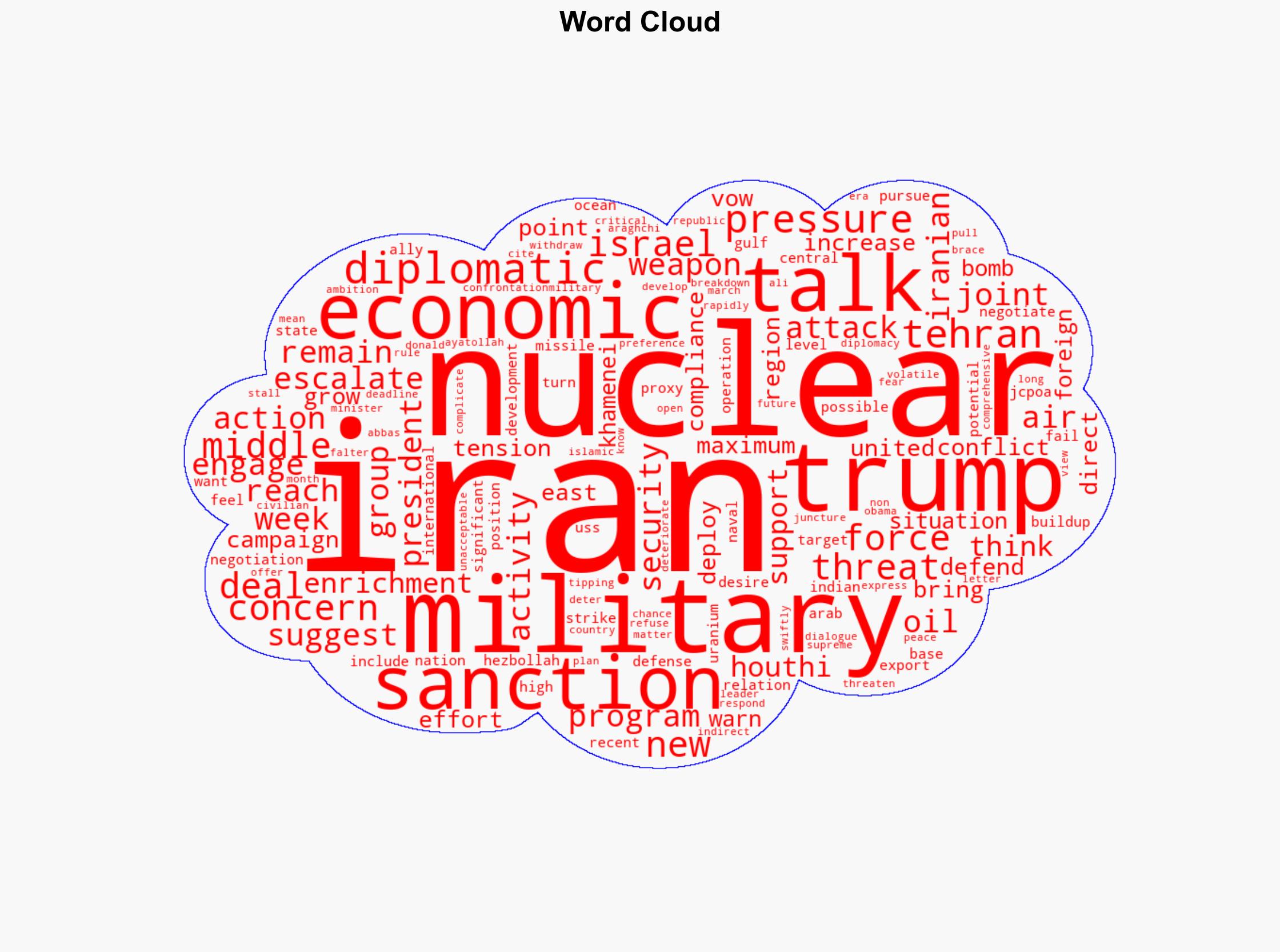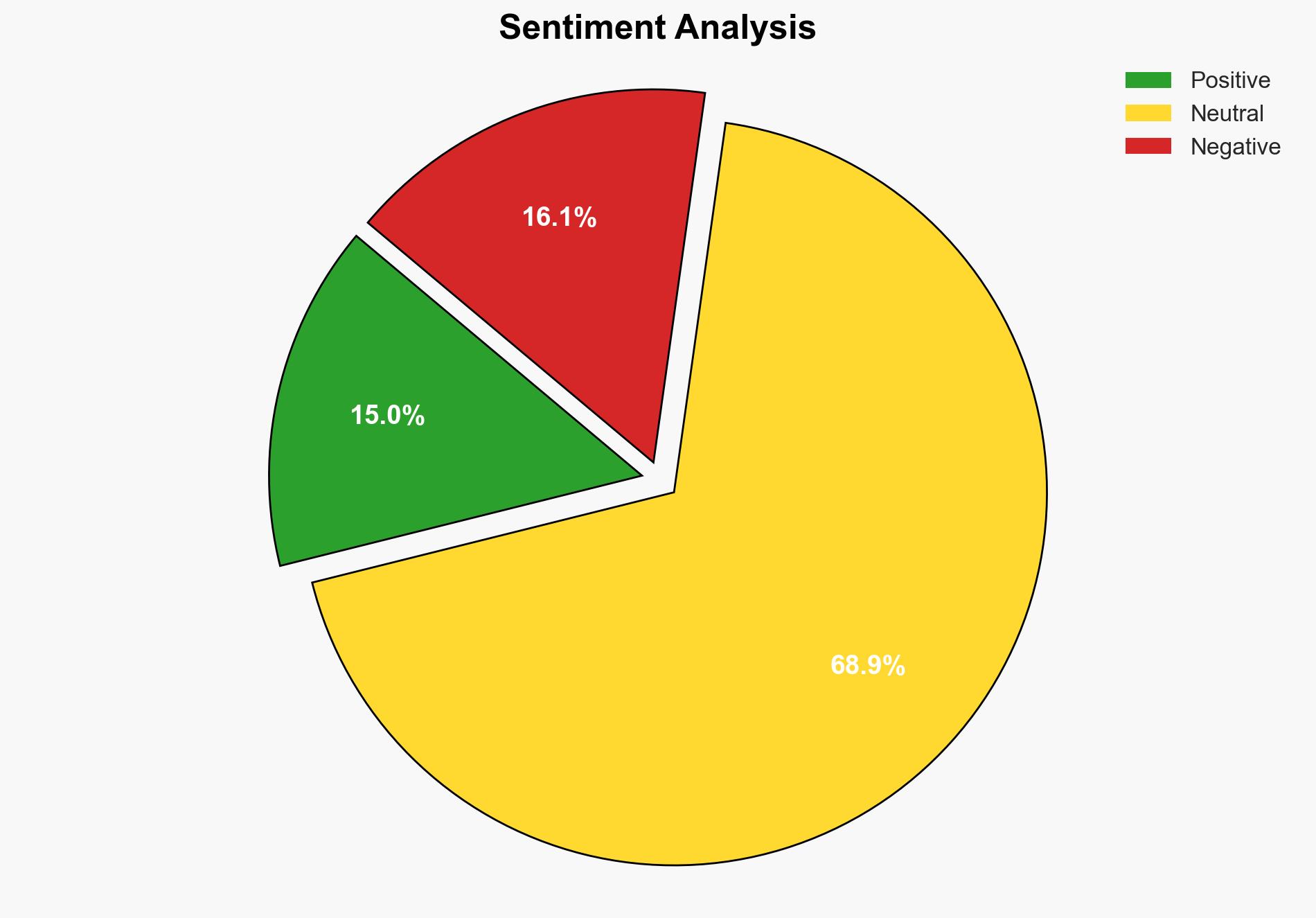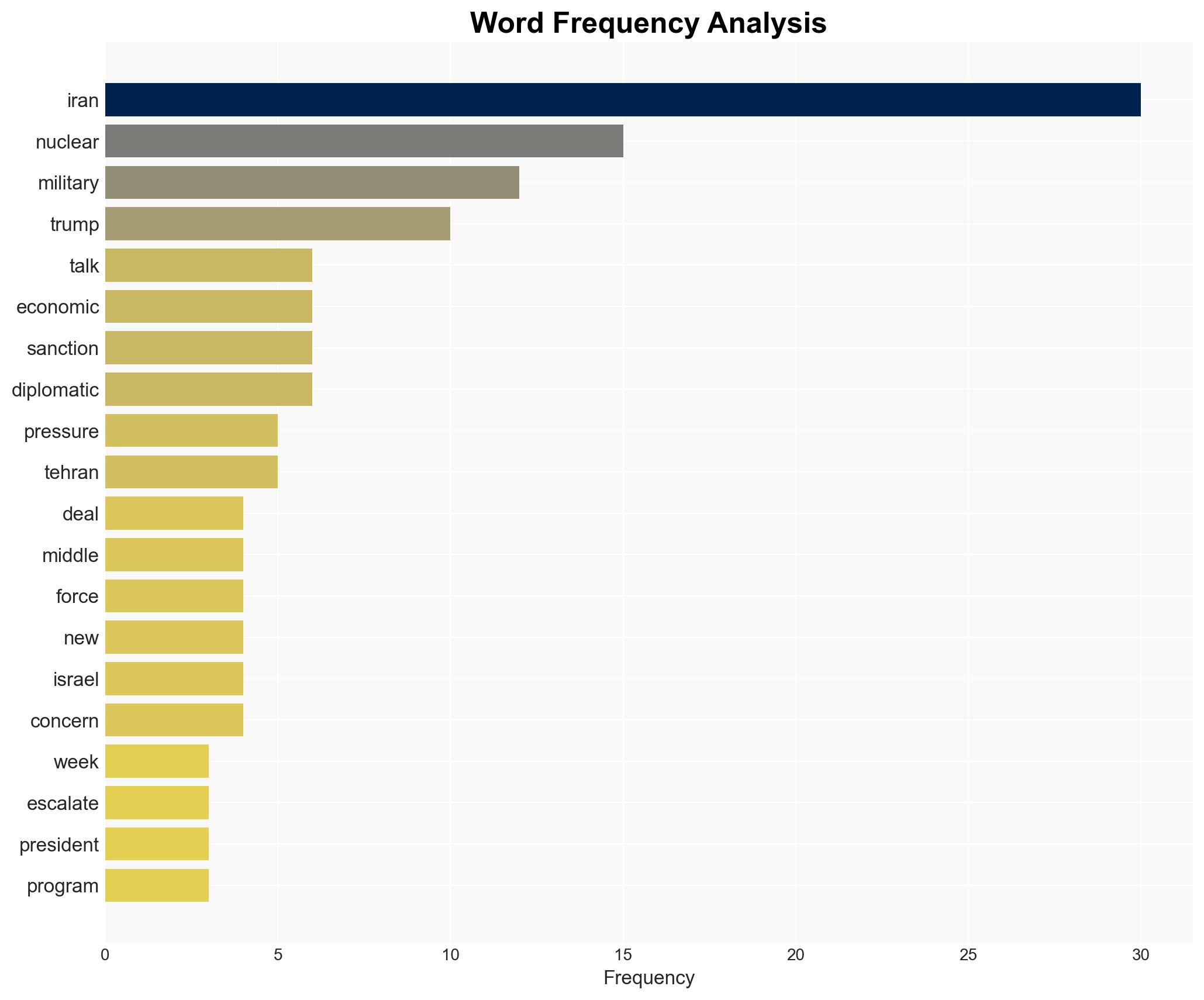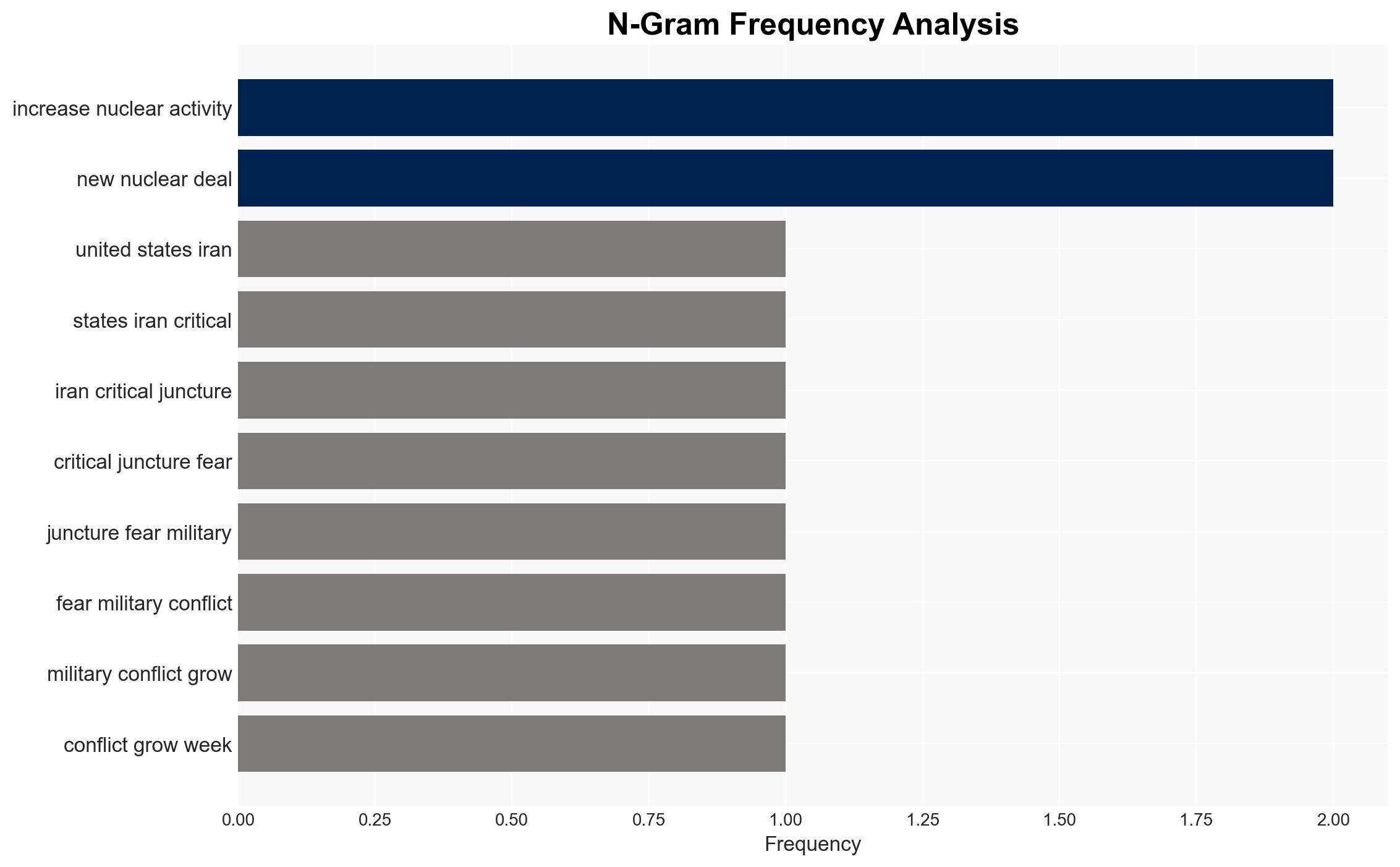Iran and US Threat of War Seven Signs To Watch – Newsweek
Published on: 2025-04-04
Intelligence Report: Iran and US Threat of War Seven Signs To Watch – Newsweek
1. BLUF (Bottom Line Up Front)
The current geopolitical climate between the United States and Iran is marked by escalating tensions, primarily due to stalled nuclear talks and increased military posturing. The potential for military conflict is heightened by both nations’ strategic maneuvers in the Persian Gulf and surrounding regions. Immediate diplomatic efforts are crucial to de-escalate the situation and prevent further deterioration of relations.
2. Detailed Analysis
The following structured analytic techniques have been applied for this analysis:
General Analysis
The United States’ withdrawal from the Joint Comprehensive Plan of Action (JCPOA) and the subsequent “maximum pressure” campaign have significantly strained relations with Iran. Iran’s increased nuclear activities and military readiness, alongside the U.S. military buildup in the region, suggest a preparation for potential conflict. Diplomatic efforts have been undermined by mutual threats and a lack of direct communication channels. The economic sanctions imposed by the U.S. have exacerbated Iran’s economic instability, further complicating diplomatic negotiations.
3. Implications and Strategic Risks
The primary risks include a potential military confrontation that could destabilize the Middle East region, disrupt global oil supplies, and impact international economic markets. The continued escalation may lead to a broader conflict involving regional allies and adversaries. The economic sanctions have already triggered significant instability within Iran, which could lead to internal unrest and further complicate diplomatic resolutions.
4. Recommendations and Outlook
Recommendations:
- Engage in multilateral diplomatic efforts to reopen dialogue channels between the U.S. and Iran.
- Consider easing certain economic sanctions to incentivize Iran’s compliance with nuclear agreements.
- Enhance regional security cooperation with allies to mitigate potential threats.
Outlook:
Best-case scenario: Diplomatic negotiations resume, leading to a new nuclear agreement and de-escalation of military tensions.
Worst-case scenario: Military conflict erupts, causing widespread regional instability and global economic repercussions.
Most likely outcome: Continued diplomatic stalemate with periodic escalations in military posturing, maintaining a high-risk environment.
5. Key Individuals and Entities
The report mentions significant individuals such as Donald Trump, Ali Khamenei, Abbas Araghchi, Masoud Pezeshkian, and Qasem Soleimani. Key entities involved include the United States, Iran, and the International Atomic Energy Agency.





